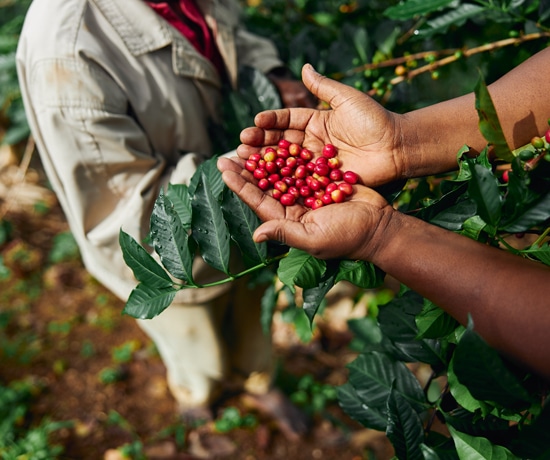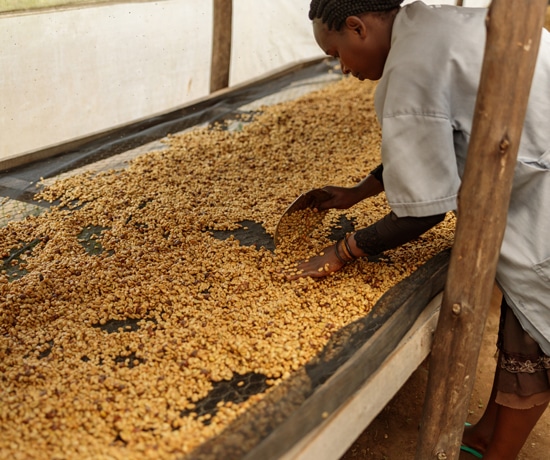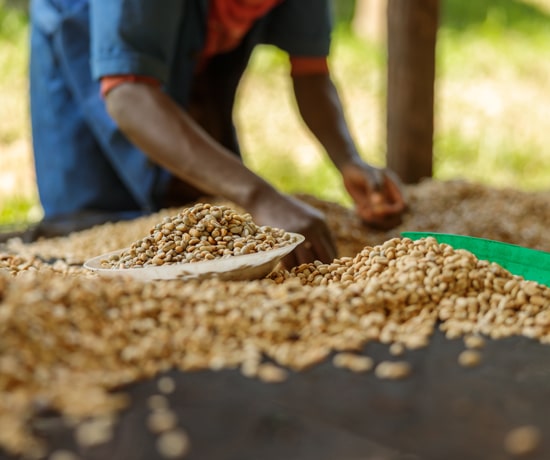Honey processing method
The third basic processing method is, besides washed and natural, pulped natural or so-called honey processing. The process of this method could be easily described by its name – pulped natural (pulped natural processing).
For honey processing is typical pulping right after the harvest and sorting. However, some of the fruit (mucilage) is left on the bean. The leftover mucilage creates a sticky and sweet cover on the bean, which reminds of honey. This is where the second name originates.
The amount of leftover mucilage affects the final flavour of the coffee in the cup. Based on this, we can divide honey processing into 4 types:
black honey – 80-90 % of the leftover mucilage,
red honey – 50-70 % of the leftover mucilage,
yellow honey – 30–50 % of the leftover mucilage
white honey –almost all mucilage is removed.
The sticky pulp of the fruit oxidizes and changes its colour. You can see the same effect for example on an apple when it’s cut. More of the mucilage, the darker the colour.
The amount of mucilage also defines the final flavour and aroma. As you can see in the natural processing, the more of the fruit left on the bean, the sweeter and more aromatic the taste. This comes from the chemical compounds such as carbohydrates and aminoacid, that naturally occurs in the fruit.
After a few weeks of drying phase on sunlight, the parchment (the last cover of the green bean) is removed. This process is called hulling.
Dry green bean is, after sorting, ready for export.
Honey processed coffees usually have higher sweetness, lower aromatics than natural coffees, medium to high acidity and pleasant fruity notes. Common flavour notes are forest fruit, and stone fruit. Based on the type of honey, we can also define the flavour. Black honey coffee is more like natural, and white honey is more like a washed coffee.




